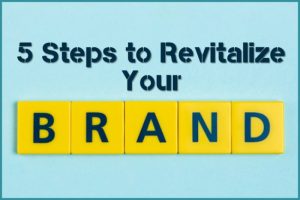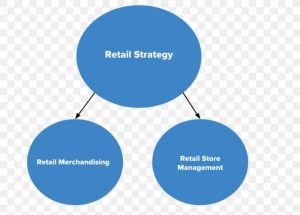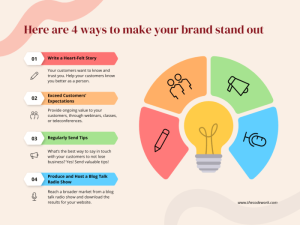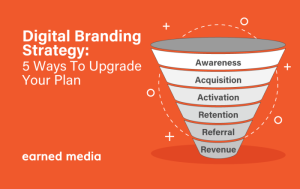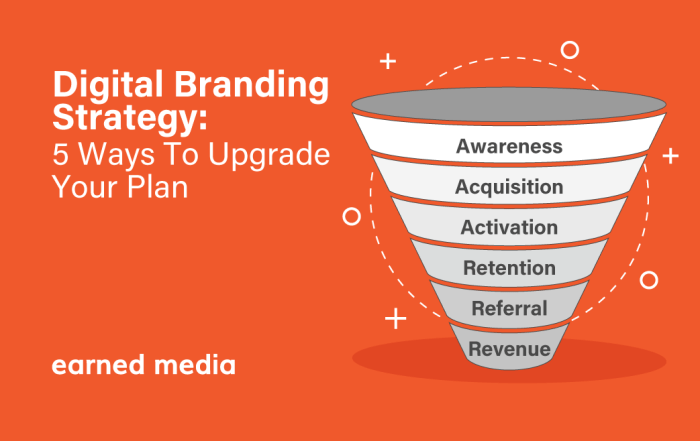
Content Marketing Strategies
Effective content marketing is crucial for building brand awareness, driving engagement, and ultimately, boosting conversions. A well-defined strategy ensures your content resonates with your target audience, establishing you as a trusted authority and fostering loyalty. This involves creating valuable, relevant, and consistent content across various platforms.
Blog Post Ideas
Developing high-quality blog posts provides in-depth information and establishes thought leadership. These posts should address specific pain points or questions your target audience has, offering practical solutions and valuable insights. The following are three blog post concepts designed to attract and engage your audience:
- Blog Post 1: “Five Unexpected Ways to Improve Your [Industry-Specific Skill/Process]” – This post would explore unconventional methods for improving efficiency or performance within a specific area related to your target audience’s industry. It could include case studies of companies that have successfully implemented these strategies.
- Blog Post 2: “The Ultimate Guide to [Industry-Specific Topic]” – This comprehensive guide would serve as a definitive resource on a key subject relevant to your target audience. It would cover all aspects of the topic, providing detailed explanations and practical advice.
- Blog Post 3: “[Industry-Specific Problem]: Common Mistakes and How to Avoid Them” – This post would address a common challenge faced by your target audience, outlining typical errors and providing clear, actionable steps to prevent them. Real-world examples would illustrate the potential consequences of these mistakes and the benefits of avoiding them.
Engaging Social Media Posts
Social media requires a visually appealing and concise approach to capture attention in a crowded digital space. Effective posts utilize strong visuals, clear messaging, and compelling calls to action to encourage engagement.
- Example 1 (Instagram): Image: A vibrant graphic showcasing a key statistic related to your industry. Caption: “Did you know? [Statistic] Learn how to improve your [relevant area] by [actionable step]. Link in bio!”
- Example 2 (Twitter): Short, impactful tweet highlighting a recent blog post or industry news. Caption: “Check out our latest blog post on [topic]! Learn [key benefit] and [another benefit]. [Link to blog post]” Include a relevant image or GIF.
- Example 3 (LinkedIn): Professional image or video showcasing a company success story or client testimonial. Caption: “We’re proud to share [client’s] success story! Learn how we helped them achieve [result]. #[relevant hashtags]”
Email Marketing Strategy for Lead Nurturing
Email marketing plays a vital role in nurturing leads and building relationships. A well-structured email campaign delivers valuable content to prospects, guiding them through the sales funnel and fostering brand loyalty.A multi-stage email sequence can be implemented. The initial email could offer a valuable resource like an ebook or checklist in exchange for contact information. Subsequent emails would provide relevant content, addressing specific needs and concerns, gradually building trust and encouraging engagement.
This strategy includes personalized emails based on user behavior and segmentation. For instance, an email triggered by a website visit to a specific product page could offer a tailored discount or demo.
Short-Form vs. Long-Form Content
Short-form content, such as social media posts and short videos, excels at grabbing attention quickly and driving immediate engagement. Long-form content, such as in-depth blog posts and white papers, offers more comprehensive information and establishes expertise. The effectiveness of each format depends on the specific goals and target audience. Short-form content is ideal for quick updates and driving traffic to longer content.
Long-form content is more suitable for establishing thought leadership and driving deeper engagement with highly interested individuals. A balanced approach utilizing both short and long-form content is often the most effective strategy.
Leveraging Visuals and Storytelling
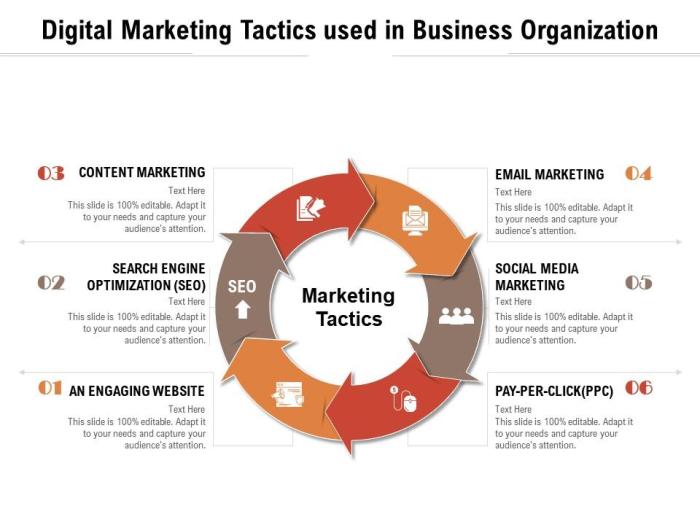
Visuals and storytelling are crucial for successful digital branding. They allow you to connect with your audience on an emotional level, making your brand memorable and trustworthy. By crafting a compelling visual identity and narrative, you can differentiate yourself from competitors and build a strong brand presence online. Effective use of visuals also improves engagement and increases the likelihood of your message being shared.
A cohesive visual identity and a strong brand narrative are essential for building a recognizable and memorable brand. This involves careful consideration of your brand’s aesthetic, its story, and how these elements resonate with your target audience. Successful visual storytelling engages the audience, prompting them to interact and share your brand’s message.
Brand Mood Board: Visual Style and Color Palette
Our hypothetical brand, “Artisan Coffee Roasters,” aims for a feeling of warmth, handcrafted quality, and sophisticated simplicity. The mood board would feature earthy tones – deep browns, creamy beiges, and muted greens – reflecting natural ingredients and artisanal processes. Typography would utilize a clean sans-serif font for readability, paired with a more elegant serif font for headlines and branding elements, suggesting both modernity and tradition.
Images would showcase close-ups of coffee beans, hands carefully roasting, and steaming mugs in cozy settings. The overall aesthetic aims for a rustic yet refined feel.
Brand Story: Unique Selling Proposition and Values
Artisan Coffee Roasters’ brand story centers around a commitment to ethically sourced, single-origin coffee beans and a passion for the craft of roasting. We highlight the journey from bean to cup, emphasizing the dedication and expertise of our roasters. Our unique selling proposition is our commitment to quality and sustainability, combined with a personalized customer experience. Our values include ethical sourcing, environmental responsibility, and community engagement.
The narrative focuses on the people behind the brand and their passion for creating exceptional coffee.
Examples of Resonating Visual Content
Three visual content examples that would resonate with our target audience (coffee lovers who appreciate quality and ethical practices) include:
- High-quality image: A close-up photograph of glistening, dark roasted coffee beans, showcasing their rich texture and aroma. The image evokes the sensory experience of coffee, appealing to the audience’s desire for premium quality.
- Short video: A time-lapse video showing the coffee roasting process, from green beans to the final product. This demonstrates our expertise and commitment to craftsmanship, adding transparency and building trust.
- Infographic: A visually appealing infographic illustrating the ethical sourcing of our coffee beans, highlighting our partnerships with farmers and our commitment to sustainability. This caters to the socially conscious consumer.
Visual Narrative: Customer Journey
The following images illustrate the customer journey, from initial awareness to brand loyalty:
- Image 1: An engaging social media post showcasing a beautifully brewed cup of coffee, with a captivating caption. This represents the initial awareness stage, where the customer first encounters the brand.
- Image 2: A high-quality product image on our website, highlighting the coffee beans’ origin and roasting profile. This represents the consideration stage, where the customer researches and evaluates the product.
- Image 3: A customer testimonial featuring a positive review and a photo of the customer enjoying their coffee. This represents the purchase stage, where the customer makes a decision to buy.
- Image 4: A behind-the-scenes image showing the coffee roasting process, highlighting the care and attention to detail. This represents the post-purchase engagement stage, building loyalty through transparency and brand storytelling.
- Image 5: A photo of a customer enjoying their coffee in a cozy setting, tagged with the brand’s social media handle. This represents the brand advocacy stage, where the customer becomes a brand ambassador.
Community Engagement and Influencer Marketing
Building a thriving online community and leveraging influencer marketing are crucial for successful digital branding. A strong community fosters brand loyalty and provides valuable user-generated content, while influencer collaborations extend your reach and credibility. Strategic implementation of both is key to maximizing your brand’s impact.
Strategies for Building a Strong Online Community
Creating a vibrant online community requires a multifaceted approach. It’s about fostering genuine connection and interaction, not just broadcasting messages. This involves actively listening to your audience, responding to comments and queries promptly, and creating engaging content that sparks conversation. Consistency is vital; regular updates and interactive content keep your community active and engaged.
Identifying and Collaborating with Relevant Influencers
Identifying the right influencers requires careful consideration of your target audience and brand values. Look for influencers whose audience aligns with yours and whose content resonates with your brand’s message. Analyze their engagement rates, audience demographics, and overall brand alignment. Collaboration should feel authentic; avoid forced partnerships that feel inauthentic to your audience. Negotiate clear terms, deliverables, and campaign goals upfront.
Measuring the ROI of Influencer Marketing Campaigns
Measuring the ROI of influencer marketing involves tracking key metrics beyond simple reach. Consider tracking website traffic driven from influencer posts, social media engagement (likes, shares, comments), lead generation, and ultimately, sales conversions attributed to the campaign. Use unique tracking links and promo codes to accurately measure the impact of each influencer collaboration. Compare the cost of the campaign with the resulting revenue and engagement to determine its overall effectiveness.
A simple formula to consider is:
ROI = (Revenue Generated – Campaign Cost) / Campaign Cost100%
. This provides a percentage return on investment, allowing for a clear understanding of the campaign’s profitability.
Examples of Successful Community-Building Initiatives
- Nike’s Run Club: Nike fostered a strong community around running through their Nike Run Club app, which offers guided runs, challenges, and social features connecting runners globally. This built a loyal community centered around shared fitness goals.
- Glossier’s “Into the Gloss”: Glossier built a community around their beauty brand by creating a blog and social media presence centered around authentic beauty conversations. This fostered a sense of belonging and brand loyalty among their target demographic.
- Starbucks’ Rewards Program: Starbucks’ rewards program not only incentivizes repeat purchases but also fosters a sense of community among loyal customers through exclusive offers and personalized experiences. This loyalty program actively encourages engagement and creates a feeling of belonging.
Paid Advertising and Digital PR

Paid advertising and digital PR are crucial components of a successful digital branding strategy. They work synergistically, with paid advertising driving immediate results and digital PR building long-term brand credibility and reach. A well-integrated approach maximizes return on investment and strengthens brand presence across various online platforms.Effective implementation requires a strategic approach encompassing budget allocation, compelling ad copy, and a proactive media outreach plan.
This section will explore these elements, highlighting the nuances of different advertising platforms and the benefits of securing media coverage.
Budget Allocation Strategy for Paid Advertising
A successful paid advertising campaign hinges on a well-defined budget allocation strategy. This involves determining the total budget and distributing it across various platforms based on their potential reach, target audience demographics, and campaign goals. For example, a company targeting a younger demographic might allocate a larger portion of its budget to platforms like Instagram and TikTok, while a business focusing on professional services might prioritize LinkedIn and Google Ads.
A common approach is to start with a smaller budget across multiple platforms and then gradually shift resources towards the most effective channels based on performance data. This iterative approach allows for optimization and maximizes the return on investment. Consider using a percentage-based allocation, allocating percentages based on historical performance data or predicted success rates of different platforms.
For example, 40% to Google Ads, 30% to Facebook Ads, 20% to Instagram Ads and 10% to LinkedIn Ads, adjusted based on results.
Sample Ad Copy for a Paid Social Media Campaign
Consider a hypothetical campaign for a new sustainable clothing brand, “EcoThreads.” A sample Facebook ad copy could be:”Tired of fast fashion? EcoThreads offers stylish, sustainable clothing made from recycled materials. Shop our new collection and look good while doing good! [Link to website] #sustainablefashion #ecofriendly #ethicalfashion”The image accompanying this ad would feature a diverse group of models wearing EcoThreads clothing in a natural, outdoor setting.
This approach aims to resonate with the target audience’s values and highlight the brand’s unique selling proposition. For Instagram, a carousel post showcasing individual pieces with short, impactful captions would be effective.
Securing Media Coverage and Building Brand Awareness Through Digital PR
Digital PR focuses on securing online media coverage to enhance brand visibility and credibility. This involves identifying relevant online publications, bloggers, and influencers within your niche and pitching compelling stories that align with their audience interests. For example, EcoThreads could pitch a story about their sustainable manufacturing process to a blog focused on ethical consumerism. A strong media kit, including high-quality images and compelling press releases, is crucial.
Building relationships with journalists and bloggers is also key, allowing for a more personalized pitch. Tracking media mentions and analyzing their impact on website traffic and brand awareness is crucial for evaluating the success of the campaign.
Comparison of Paid Advertising Platforms
Google Ads and social media ads (Facebook, Instagram, LinkedIn, etc.) offer distinct advantages. Google Ads excel at driving targeted traffic to a website through search engine optimization (). Social media ads are ideal for brand building, community engagement, and reaching specific demographics through precise targeting options. Google Ads are generally more effective for direct response marketing (e.g., driving sales), while social media ads are better suited for building brand awareness and engagement.
The choice of platform depends on campaign objectives and target audience. A blended approach, using both Google Ads and social media ads, often yields the best results.

